Inebriation and Intoxicants
Cognac and yogurt
Not a combination that would have occurred to me. But who knows. Perhaps it was really good.
Apparently this product was, like Touch of Yogurt Shampoo, an attempt to cash in on the yogurt craze that was sweeping America at the time.
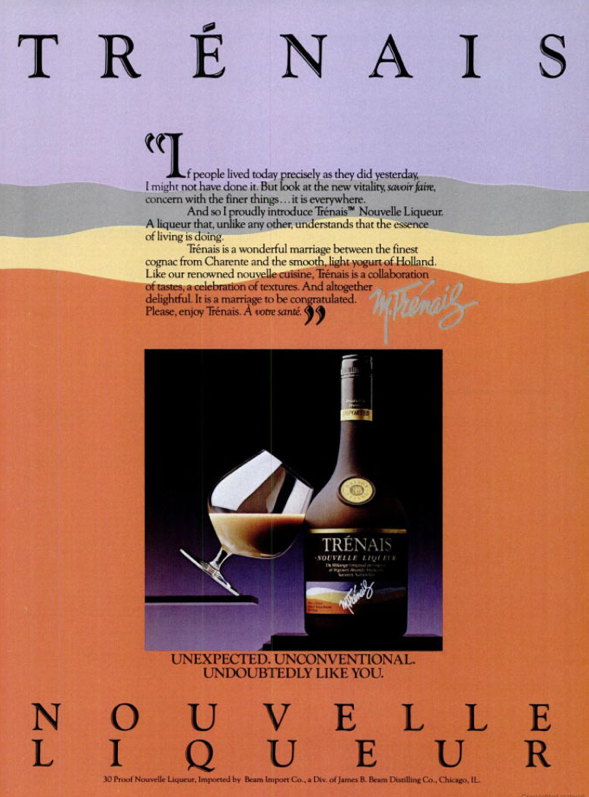
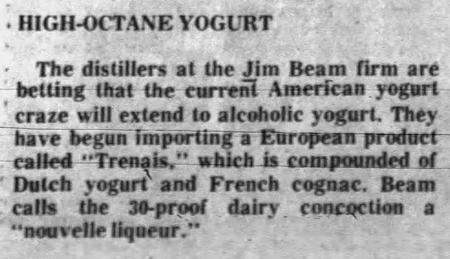
The Santa Clarita Signal - Aug 24, 1983
Posted By: Alex - Fri Apr 06, 2018 -
Comments (5)
Category: Inebriation and Intoxicants, 1980s
Sanatogen Tonic Wine
Back in 2016, Paul posted some ads for Sanatogen Tonic Wine from early in the 20th century. Here are some more ads for this fine product, but from later in the century (1960s), in which the marketing team decided to focus on how this medicinal wine was the cure for a housewife's blues. Feeling bored at home, run-down by the kids? No problem, just take a little swig of Sanatogen and you'll be numb to your problems in no time! "That's lovely... that's better"
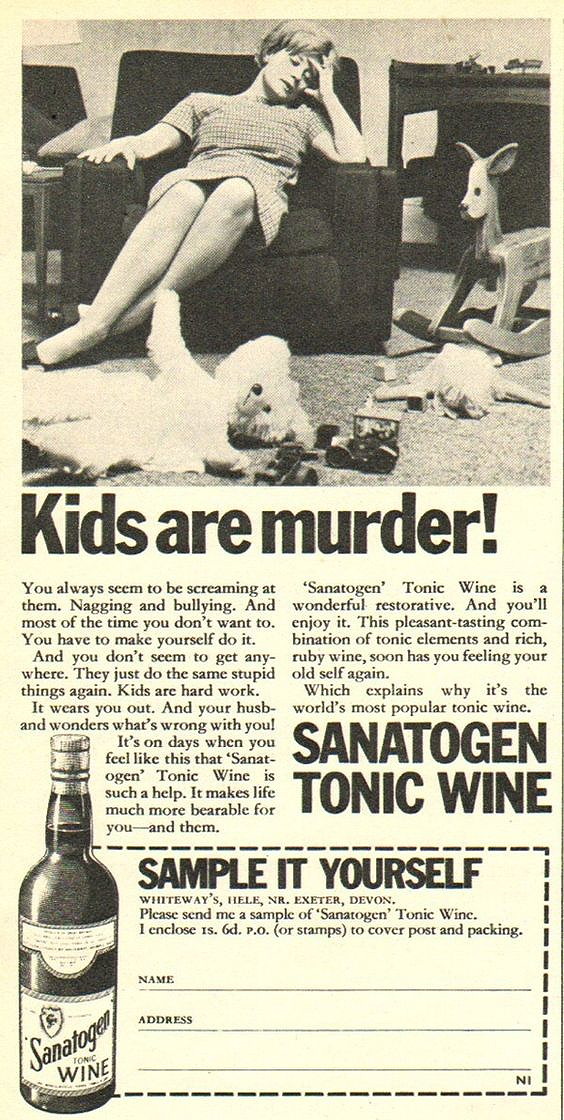
Posted By: Alex - Sat Mar 31, 2018 -
Comments (3)
Category: Inebriation and Intoxicants, Advertising, 1960s, Alcohol
Wine on Tap, version 2.0
We've previously we've posted about wine on tap in hotel rooms. Such as the Hotel Terminus in France, which in 1953 ran pipes through the walls to achieve this.There's now a more high-tech alternative. The Plum Dispenser is a $1500 gadget that stores several bottles of wine, but dispenses a glass at a time — allowing hotel guests to buy a single glass in their room rather than a whole bottle. It's basically wine on tap. Though the prices aren't cheap:
$16 for 5 ounces of wine? You could go to a local supermarket and buy an entire bottle for that.
More info: North Bay Business
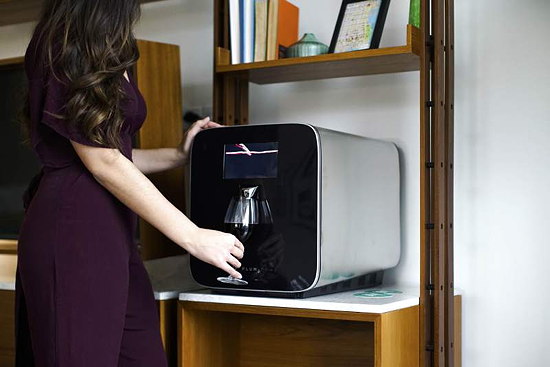
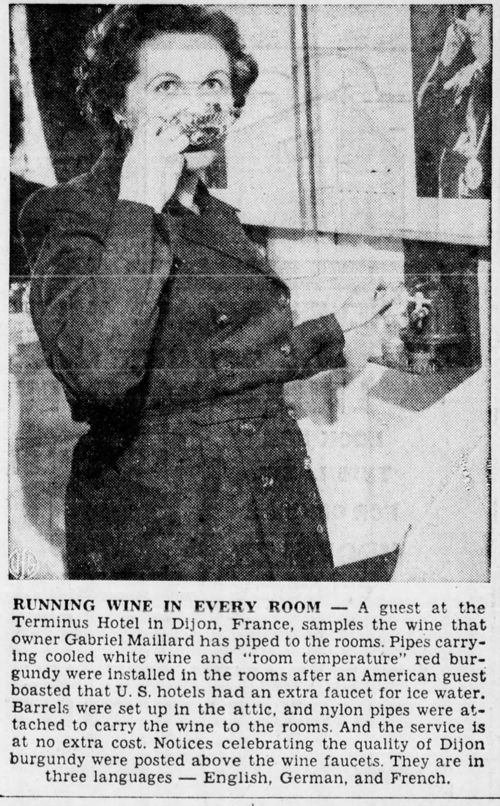
The Evening Sun (Hanover, Pennsylvania) - Jan 7, 1954
Posted By: Alex - Mon Mar 12, 2018 -
Comments (3)
Category: Inebriation and Intoxicants, Inventions
Karen Eland - Coffee Artist
Artist Karen Eland specializes in painting with coffee and beer. I think that the coffee painting came first, and she later diversified into beer.It makes me wonder how many other drinks it's possible to paint with. Wine? Whiskey? Coke? Root Beer?
Her website: KarenElandArt.com
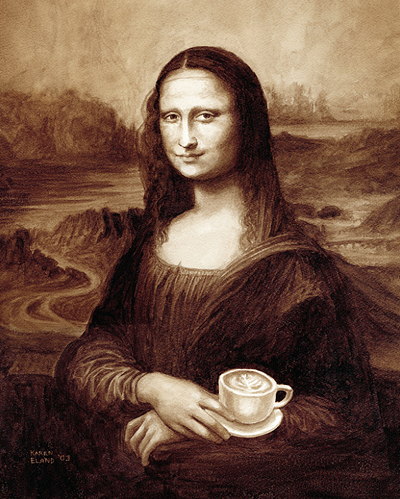
Mona Latte, 1998
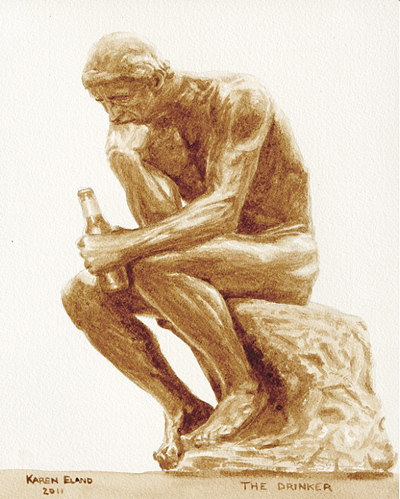
The Drinker, 2011
Posted By: Alex - Sun Sep 24, 2017 -
Comments (0)
Category: Art, Inebriation and Intoxicants, Coffee and other Legal Stimulants
Drank Embalming Fluid
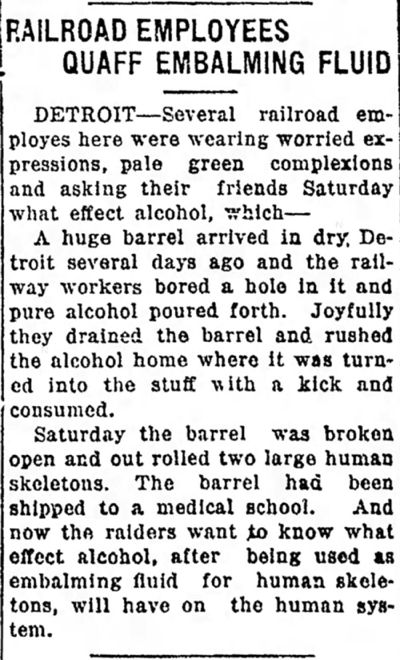
The Lima News - Feb 2, 1919
This 1919 news report of two railroad employees who drank from a barrel of alcohol, not aware that it was being used to preserve two human skeletons enroute to a medical school, sounds a lot like the "corpse in the cask" urban legend.
The legend, which dates back at least to the nineteenth century, played on the fear of accidental cannibalism. As explained by Jan Harold Brunvand in his Encyclopedia of Urban Legends:
In one version of the tale, following the Battle of Trafalgar in 1805 the body of Lord Nelson was preserved in a barrel of brandy, from which sailors sipped as it made its way back to England, inspiring the expression "tapping the admiral."
Posted By: Alex - Tue Oct 04, 2016 -
Comments (3)
Category: Death, Inebriation and Intoxicants, 1910s
Fog Vodka
California distillery, Hangar 1, is now selling a vodka made out of genuine San Francisco fog. They're calling it Fog Point.They use mesh fog catchers to trap moisture and then blend this with vodka distilled from a California Central Coast wine. They describe the result as "an extraordinarily crisp, pure, and gluten free sipping vodka with elegant hints of pear, citrus, and honeysuckle." The price tag is $125 a bottle.
Perhaps their next effort can be a vodka made from the tears of a hipster.
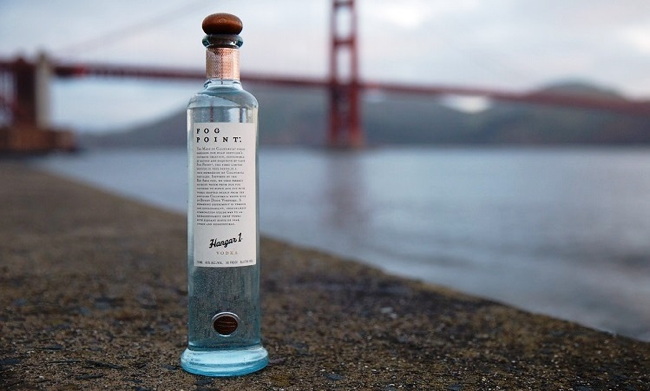
Posted By: Alex - Thu Jun 02, 2016 -
Comments (5)
Category: Food, Inebriation and Intoxicants
Anti-Aging Gin
Drinking alcohol might make the people you're with seem younger, funnier, and more attractive. However, Warner Leisure Hotels has commissioned the first drink that supposedly has an anti-aging effect on the drinker. It's "anti-aging gin," which is being marketed as Anti-Agin.The gin is described as being "For those that want to do everything they can to stay young, but don’t want to give up alcohol."
The anti-aging effect comes from "classic botanicals known for their rejuvenating properties and combining it with drinkable collagen." It's said to be "the alcoholic equivalent of a facial."
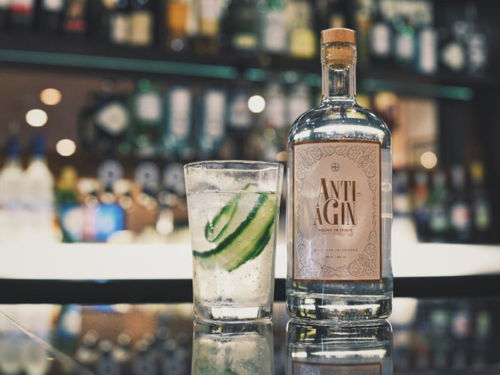
Posted By: Alex - Thu May 12, 2016 -
Comments (4)
Category: Inebriation and Intoxicants
Alibi Goat
I've heard about people sucking on pennies or mints to hide the alcohol fumes on their breath. But keeping a goat in the back of the car is new to me. Though I guess it could be an effective strategy.
The Bakersfield Californian - Sep 14, 1937
"Why not?" asked Judge J.M. Braude.
"He had a goat in the back of the car," said Lambert, "and I couldn't smell anything but the goat."
Radkewicz was placed on probation.
Posted By: Alex - Wed Nov 18, 2015 -
Comments (6)
Category: Animals, Inebriation and Intoxicants, 1930s
Woman tailed by suspicious truck, 1955

I can't find any more info on this story, but I'd be curious to know if the woman locked bumpers with the truck while it was empty or being driven (in the latter case, the driver would have bailed when he realized that she wasn't stopping). I'm guessing there was a truck driver originally, 'cause if the truck had been parked and empty its brakes would have probably been on, making it more difficult to pull.
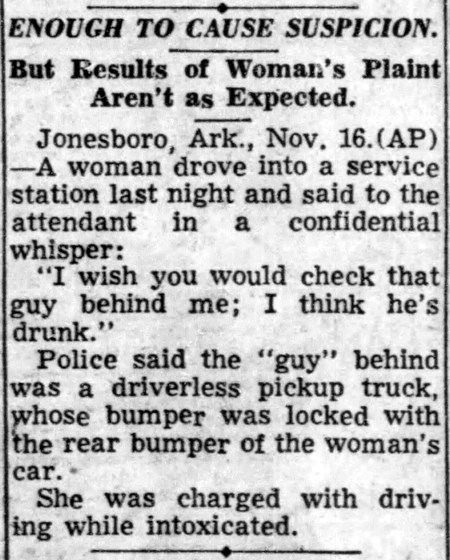
Kansas City Times - Nov 17, 1955
"I wish you would check that guy behind me; I think he's drunk."
Police said the "guy" behind was a driverless pickup truck, whose bumper was locked with the rear bumper of the woman's car.
She was charged with driving while intoxicated.
Posted By: Alex - Thu Nov 05, 2015 -
Comments (15)
Category: Inebriation and Intoxicants, 1950s
Launched in a sea of beer
In 1968, the General Dynamics shipyard in Quincy, Massachusetts denied the rumor that it was going to launch the USS Milwaukee by floating it out in a "sea of beer," but company officials admitted they had been considering the idea. They figured that it would "add distinction and excitement to the float-out."They calculated that it would have required 68 million quarts of beer to achieve the float-out, and abandoned the idea because "we just couldn't figure out what to do with 68 million non-returnable empties."
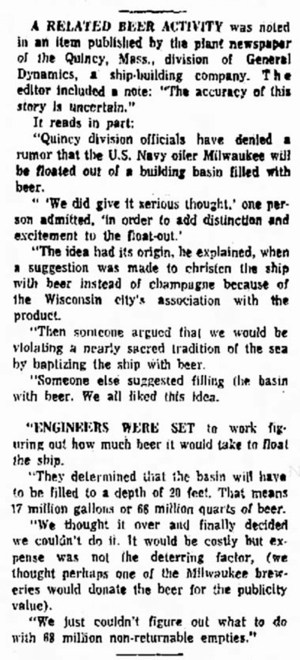
Nashua Telegraph - Sep 10, 1968
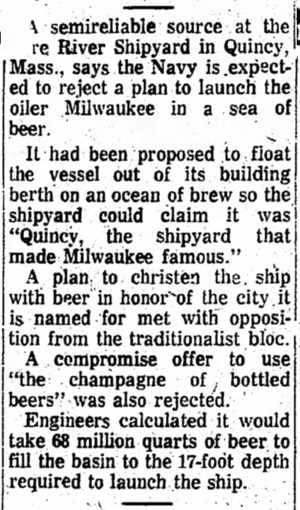
Portsmouth Herald - Sep 26, 1968

USS Milwaukee
Related: The Banana-Launched Ship, 1941
Posted By: Alex - Fri Oct 16, 2015 -
Comments (3)
Category: Inebriation and Intoxicants, 1960s

| Who We Are |
|---|
| Alex Boese Alex is the creator and curator of the Museum of Hoaxes. He's also the author of various weird, non-fiction, science-themed books such as Elephants on Acid and Psychedelic Apes. Paul Di Filippo Paul has been paid to put weird ideas into fictional form for over thirty years, in his career as a noted science fiction writer. He has recently begun blogging on many curious topics with three fellow writers at The Inferior 4+1. Contact Us |




